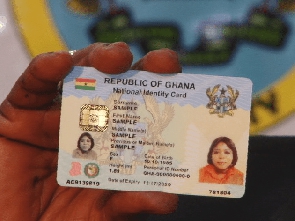Opinions of Tuesday, 13 December 2011
Columnist: GNA
Child labour, a fight for all
Accra, Dec. 11, GNA - Child Labour has become a global plaque that cannot be ignored. The destructive trail of the physical and emotional effect on the victims is monumental and the records say it all with shocking statistics.
The challenge of the modern day slavery has attracted international and national attention including the United Nations, governments, civil society organisations, non-governmental organisations (NGOs) and other relevant development partners in the fight to eliminate the menace.
Past and present governments of Ghana recognised the challenge child labour posed to the achievement of national and international goals in the area of education, poverty reduction, social protection and human rights and very importantly the attainment of the Millennium Development Goals by 2015.
Ghana has ratified the International Labour Organisation’s (ILO) convention 182 at its 87th session in June 1999 with various interventions undertaken with support from the ILO- International Programme on the Elimination of Child Labour (IPEC), international and local NGOs.
Meanwhile international agencies such as the United Nations Children's Fund and International Organisation for Migration have also contributed to address the problem.
All these have resulted in the development of policies and legislations and the implementation of actions in identifying, withdrawing and rehabilitating children in various Worst Forms of Child Labour (WFCL). However, these efforts have not yet resulted or met the set goals yet.
According to ILO Global Labour Report (2008), the rate of decline in the number of children in child labour has been slowing over the years, with 215 children in child labour and 115 in hazardous work registering three per cent decline as against 10 per cent in 2004.
Again the Ghana Child Labour Survey (GCLS 2003) shows that out of the estimated number of 6.36 million children between 5-17 years, representing 2.47 per cent (half of rural children and one-fifth of urban children) engaged in economic activities.
Meanwhile more than 88 per cent of these children work as unpaid family labour, with boys dominating sectors including fishing, agriculture, mining, quarrying, and truck pushing. The girls are engaged in domestic work, commercial sexual exploitation and hawking.
Mrs Stella Ofori, Principal Labour Officer, Child Labour Unit of the Labour Department of the Ministry of Employment and Social Welfare (MESW), said in an interview that government’s commitment to sustain and mainstream Child labour activities in institutional action plan have developed a National Plan of Action (NPA) for the elimination of WFCL by 2015.
She explained that the NPA was in fulfilment of the requirement that ratifying states of the ILO convention 182 should put in place effective time bound measures to eliminate WFCL by 2016.
The NPA is a comprehensive framework that seeks to promote a more co-ordinated effort towards the elimination of WFCL and would provide an integrated framework for harmonising all relevant actions by different partners in order to tackle the problem in a well-
co-ordinated and sustained manner.
According to Mrs Ofori, the plan was endorsed by Cabinet on October 20, 2010 as a National Child Labour Policy and has been mainstreamed into the Ghana Share Growth and Development Agenda (GSGDA 2010-2013) and the United Nations Development Assistance Framework (UNDAF 2012-2016).
The overall goal of the plan is to reduce the WFCL to the barest minimum by 2015, while laying strong social, policy and institutional foundations for the elimination and prevention of all other forms of child labour in the longer term.
The NPA has prioritised nine of the WFCL for elimination including child trafficking, mining and quarrying, fisheries, ritual servitude, commercial sexual exploitation of children, street hawking and begging and child domestic servitude.
Information gathered also indicates that the Child Labour Unit of the MESW would play a co-ordinating role at the national level, promoting participation, efficiency and the flow of information among partners, while the Child Labour Unit of the Labour Department will have an oversight responsibility for specific interventions designated to lead institutions, sensitising stakeholders to ensure commitment to support the implementation of the plan.
The ILO as part of its commitment to support the country is currently implementing a project to eliminate child labour in the country dubbed: “The Cocoa Community Project,” and titled “Towards Child Labour Free Cocoa Growing Communities in Ghana and Cote d’ Ivoire through an Integrated Area-Based Approach.”
The initiative seeks to help 3,500 child labourers to improve their formal and informal education as well as vocational training.
The project also seeks to introduce five main components to support government’s efforts in the elimination process including awareness raising and development of community action plan, access to relevant education, alternative livelihoods, child labour monitoring system and capacity building.
The project targets four districts namely; Birim South, Wassa Amenfi West, Suhum- Kraboa Coaltar and Twifo-Hermang Lower Denkyira while benefitting 10 communities per district, 250 households or families per district, 87 children per community, 25 households per communities and between three and four children per households.
The project would also benefit 3,050 children below the legal minimum age for employment while 1,000 households would take advantage of employment opportunities, income generation and social protection services.
Other past intervention areas implemented by the Organisation included the West Africa Cocoa Commercial Agriculture Project (WACAP, 2002-2006) aimed at eliminating the WFCL in the cocoa sector and was funded largely by the United States Department of Labour, the National Programme for Elimination of WFCL in Cocoa (NPECLC, 2006), the Development of the Hazardous Child Labour Framework (HAF, 2008) and the development and implementation of Community-based Child Labour Monitoring Systems.
On legal framework for child labour enforcement, government has enacted so many legislations but the questions one may be asking is are these laws actually working for its intended purpose? Your guest is as good as mine.
Mrs Ofori called for the enforcement of child labour laws in the elimination of the menace in the communities to deter other perpetuators from continuing with the practice.
“Ghana has a comprehensive legal framework for addressing child labour but enforcement is weak and uncoordinated,” she added.
She, however, explained that there is the need to train law enforcement agencies on the existence of child labour laws, since most of them do not know the laws exist.
According to the Principal Labour Officer, the judiciary needs to be trained to better understand the pertinent issues pertaining to child labour to be well-informed in their judgments.
An article published by Allafrica.com revealed that security agencies in other African countries are also facing the challenge of ignorance of the law.
Modernghana.com another website has published an article by Professor Daniel Bour noting that “the media can be the effective organisation in achieving the desired goals in fighting child labour in the country.”
According to Prof Bour for the country to succeed in the fight against WFCL in the cocoa and other sectors, it needs to be inextricably bound to effectively collaborate and co-ordinate activities with partners and stakeholders.
The efforts by the government and its development partners indicate the seriousness attached to the issue of child labour and its commitment to the elimination process.
I was on the trip to some of the Cocoa growing districts in the country and all indications shows that poverty is the main contributory factor to the child labour menace.
In an interview with some of the farmers, they said they wished their children attended school but resources to finance them have always been a problem.
For all these years the famers embrace interventions introduced or implemented by the various agencies and when the period elapses they go back to their old ways of doing things.
It is high time these farmers understand the concerns been raised and support government and other stakeholders to fight the menace once and for all.
The farmer should also be made to know that their children are the future leaders of this country and denying them of the needed quality education means the future of the nation will be thrown into jeopardy.
The community members should also be willing to volunteer information for the prosecution of those involved in the shameful act.
All hands are needed on board to end the child labour menace, now that we as a country are experiencing massive involvement of rural communities in small scale mining (galamsey) operations, meaning that children would be used in the booming sector.
A GNA Feature by Morkporkpor Anku












